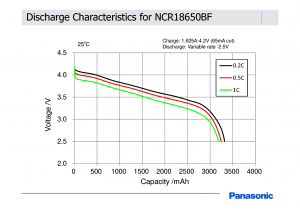This section describes the design goals for my telescope power box. The required characteristics are somewhat higher than for commercial available powerbanks.
Case
The case shall be robust and „one hand handable“. During the transport situation it shall be water proof or even water tight. This is is not necessary during use at the telescope. Soon it became clear that a DIY solution similar to my „big block“ is not a choice anymore. I prefer one of the B+W outdoor cases. I already have some of them in use and made very good experiences with this cases.

For these cases addional profiles are available wich allow an easy installation of front panels or electronic devices. For my power box the type 1000 or 3000 came into a closer choice. Finally I’ve had choosen the type 3000. Maybe it is a bit larger than would prefer, but the type 1000 would be very tight and hence I would have almost no buffer space for mounting my devices. In my experience it an advantage to have more space for the components. This allows a more cleaned up set-up and gives a chance for later corrections.
Output Sockets
Regarding the output socket the following set shall be available:
- Three XLR sockets with the „Astroleuchten pin assignment„. The voltage shall be 13.8 Volts and of a good quality. Since I it will be produced by a step-up converter, an appropriate filtering may be necessary in order to drive sensitive CCD cameras.
- One coaxial power connector 2.1 mm / 5.5 mm supplying the same voltage as the three XLRs. Since the socket can be shortened by careless plugin, it shall be switchable separately. As well it shall be fused by ist own protectice fuse.
- One car lighter Adapter (CLA) socket. I hate these sockets, but sometimes they still needed. Hence I reserve one of this type. Additionally this is a easy way to out in a car USB Adapter.
- One coaxial power connector 2.5 mm / 5.5 mm supplying 19.5 Volts and up to 3.3 Amps which is enough to feed my notebook under all conditions. The typical load will only be in the order of 1 Amp. The underlying converter must be short-circuit-proof, because my notebook draws very high currents if available. Since the notebook has ist own power supply electronics the quality of this supply chain has not to be extraordinary good. This channel shall be switchable separately as well, not because of a possible short-cut, but in order to avoid the standby current of the converter if the notebook is not connected.
Capacity
Enough energy for telescope, anti dew heatings, mount, CCD camera, guiding camera and notebook computer. In a settled situation with already fully charged Notebook that bunch draws about 3 Amps at 12 V. Assuming 12 hours for a night then the minimum is 36 Ah at 12 V.
Assuming 90% efficiency for the used DC-DC converters the minimum increases to 40 Ah.
At -10°C the Li-ion probably only delivers 80% of its nominal capacity, hence the mandatory minimum increases again. Now I need already at least 62.5 Ah.
Even Li-Ion batteries like not to be discharged fully. Hence I try to stop discharging my Li-Ions at 20 % or 10 % latest. All in all it seems recommendable to me that the nominal capacity shall be above 62 Ah.
Nominal Voltage and Maximum Current
Soon after starting the first considerations it became obvious that DC-DC converters are a must in any case, no matter what nominal voltage the power box will deliver. Main reason is the voltage of a Li-Ion cell. It varies between approx. 2.5 Volts 4.2 Volts, depending on the charging condition. Since I need 13.8 Volts, a converter is mandatory for every battery type, no matter if it is built-up out of 2, 3 or more cells. Solely the type ov converter may Change with the Input voltage.

Finally I’ve chosen a three cell design, which delivers between 7.5 Volts and 12.6 Volts, approximately. I expect the output voltage to be most of the time between 9 and 12 Volts. This makes the use of boost/buck converters mandatory.
The typical load of the box will be in the order of 3-4 Amps. The system shall be able to deliver 10 Amps for a longer time without damage.
Charge Status
The box shall have a display for the available capacity in a direct readable format, e.g., percent.